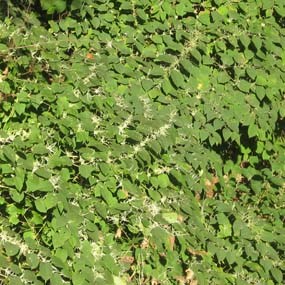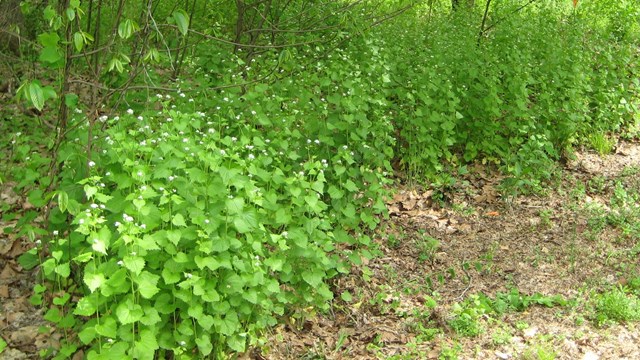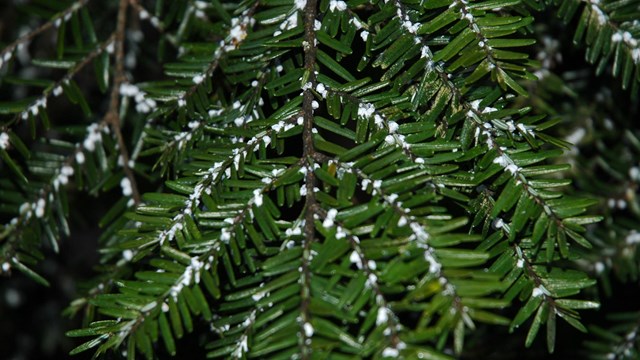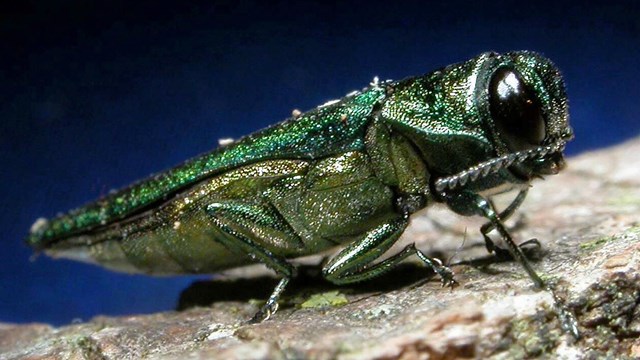
NPS photo/Dave Bieri
Among the greatest ecological challenges facing New River Gorge National Park and Preserve is the presence and threat of invasive species. Invasive species are those which do not naturally occur in a specific area and cause ecological and economic damage. The majority of invasive species are also exotic, or non-indigenous but some native species can become invasive too (i.e. deer in some areas). Many different organisms can become invasive pests including plants, vertebrates, invertebrates, fungi, and microorganisms. Exotic invasive species can be introduced purposely or accidentally. An intentional introduction could be a plant from Asia that is planted ornamentally in gardens and escapes. An accidental introduction could occur with contaminated containers shipped from overseas. Exotic invasive pests are successful in establishing populations on alien turf because their natural predators (disease, herbivore/carnivores) do not exist in the new territory and therefore can out-compete native species for resources. Invasive species can eliminate their native counterparts or destroy whole populations if gone unchecked.

NPS photo Once established, exotic invasive plants can out-compete native plants for sunlight, water, and nutrients. These alien plants can then grow faster, taller, in disturbed areas and spread to create huge monocultures. Some species are able to inhabit very disturbed areas like road embankments and old mining areas that native plants cannot grow in. In a place like New River Gorge National Park and Preserve, the most floristically diverse gorge in central and southern Appalachians, the threat of exotic invasive plants to the diversity and richness of plant life is huge. Herbivores not accustomed to consuming this new vegetation usually won't. Food sources for herbivores and omnivores could decrease because of exotic invasive vegetation. Invasive plants can disrupt entire ecosystems by altering soil conditions, food availability, and habitat area. At New River Gorge National Parka nd Preserve, Bluestone National Scenic River, and Gauley National Recreation Area, steps are taken to control exotic invasive plants in important biological and cultural areas.
For more information about invasive species in our national parks, visit the National Park Service Invasive Species page. 
Early Detection of Invasive Species
Find out about how the NPS monitors for invasive species. 
Hemlock Woolly Adelgid
Learn about what the NPS is doing to combat this invasive insect that is killing hemlock trees. 
Emerald Ash Borer
Learn about the threats that this invasive insect poses to our native ash trees. |
Last updated: January 27, 2021
